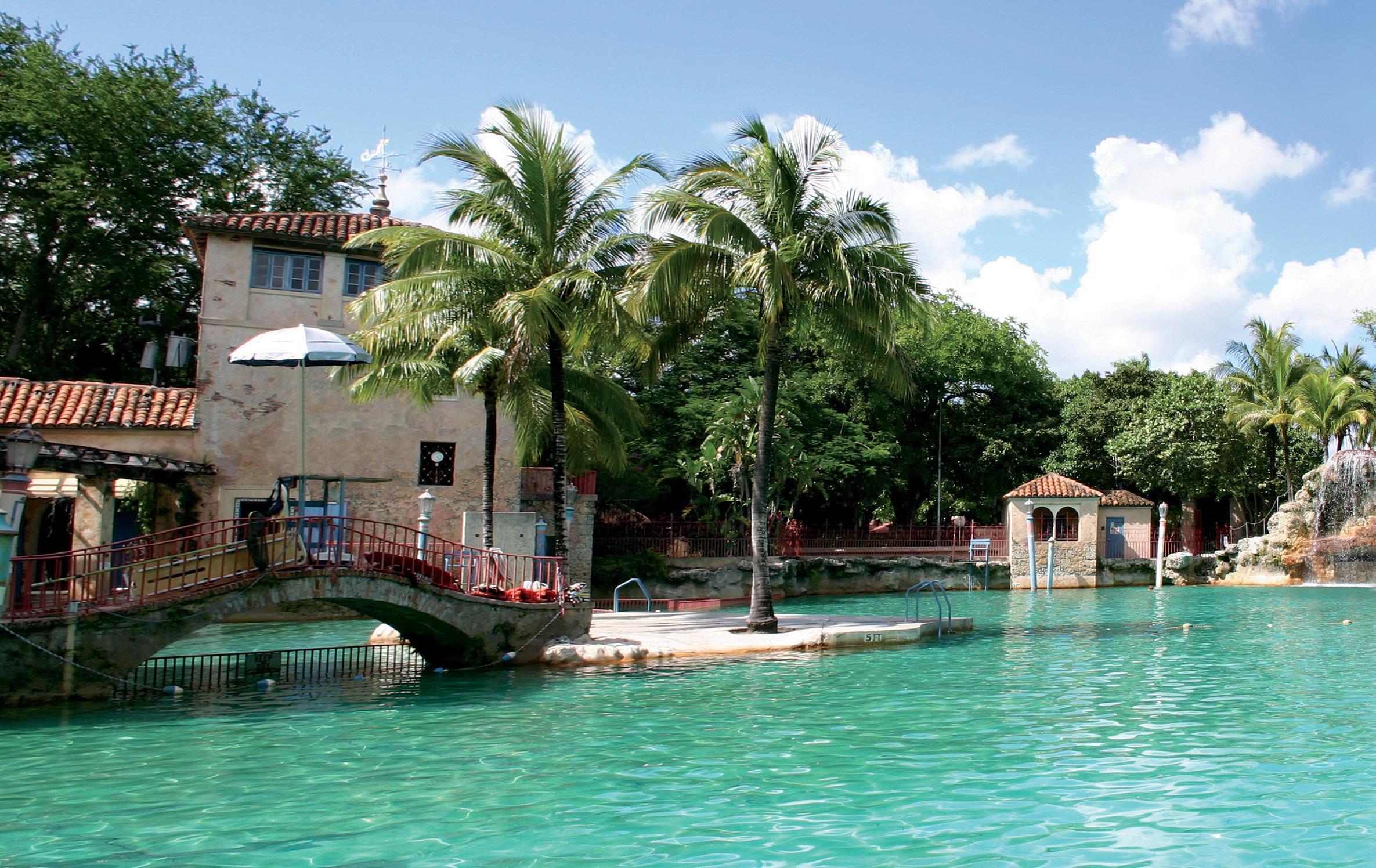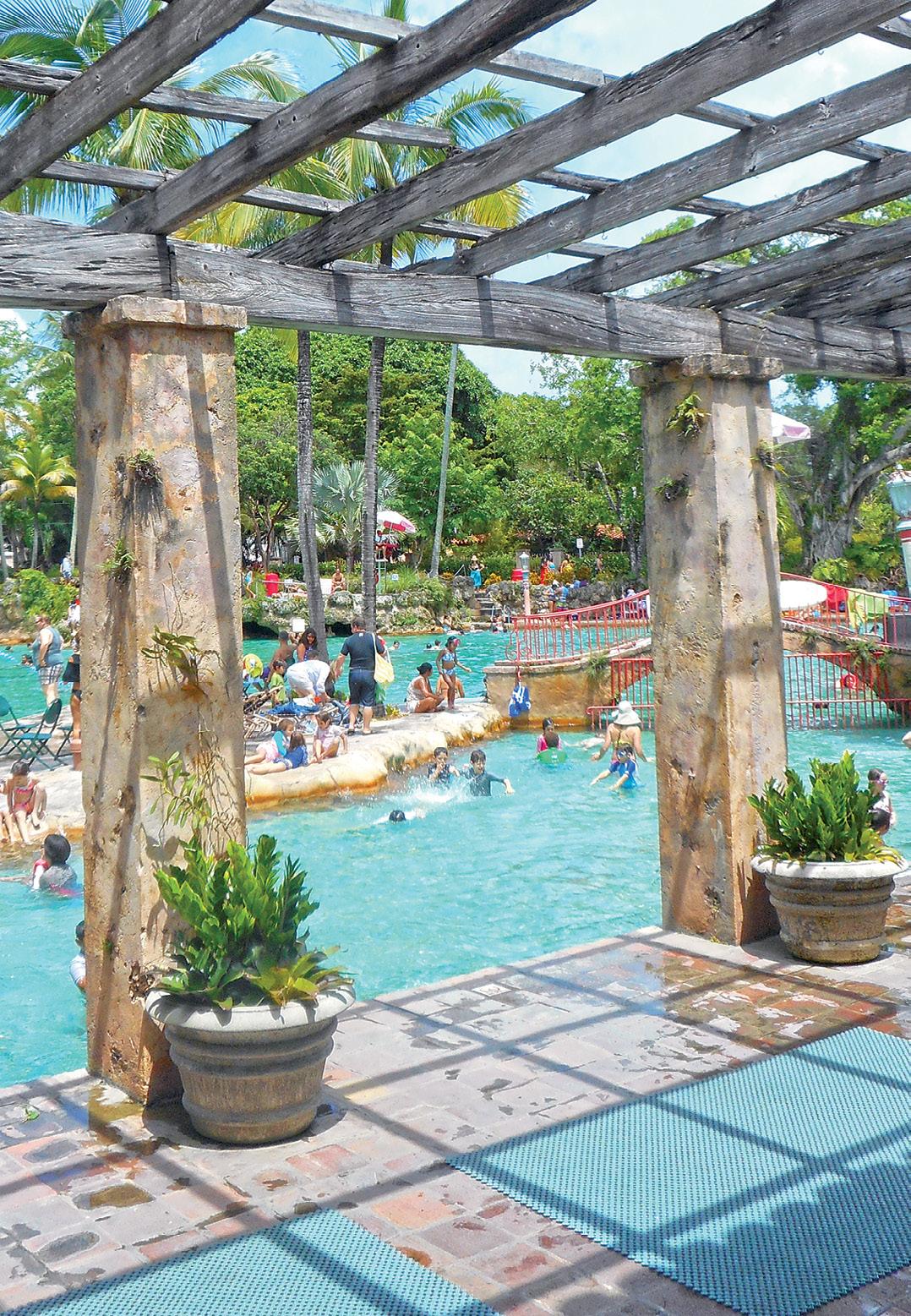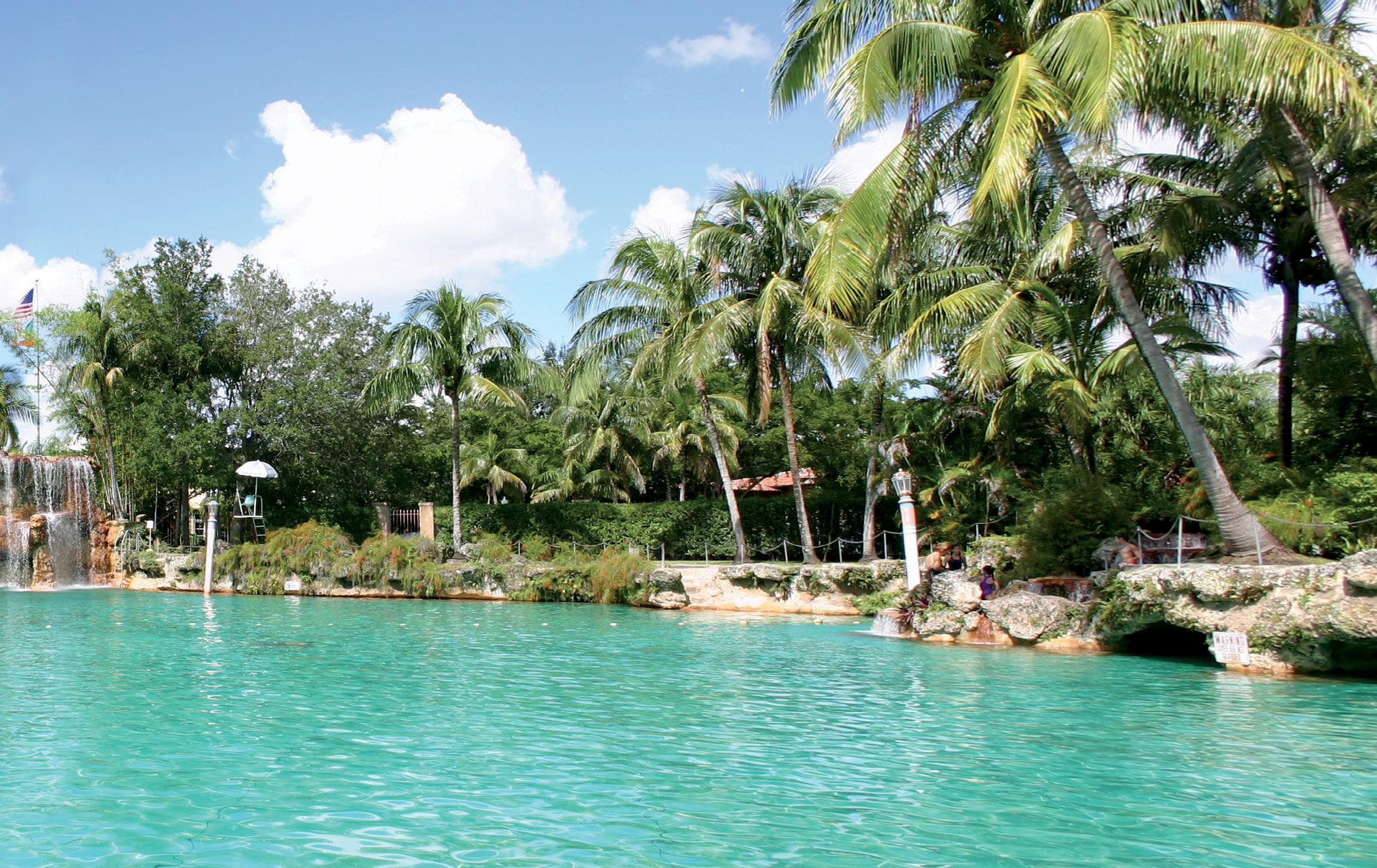
2 minute read
A Day at The Venetian
Nothing Says Coral Gables Like Its Historic Public Pool
BY RACHEL COSTA
In 1924, the Venetian Pool opened as the Venetian Casino, one of many popular bathing casinos in early 1900s Miami. These were fanciful “bathing pavilions,” mostly on Miami Beach, and had nothing to do with gambling. The Venetian in the Gables was originally a four-acre quarry, its coral rock used for many of the city’s historic structures. Abandoned in 1921, it was re-designed by famed Coral Gables artist Denman Fink and architect Phineas Paist as part of George Merrick’s plan to develop a Mediterranean-style city. Replete with coral stone buildings, gondola poles, and a Venetian bridge, in 1981 it officially earned a spot in the National Register of Historic Places, the only pool to be so designated. “It’s got magic,” says Oliver Robles, who’s been a lifeguard at the Venetian for eight years. “There’s an ambiance to it.”
The Venetian has always been a popular destination for residents and non-residents alike, a place where families, couples, and teens can relax – and, of course, swim. The pool holds over 820,000 gallons of freshwater, which is drawn daily from the Biscayne aquifer. Unlike normal chlorinated pools, the Venetian is refilled every day to ensure the natural spring water is always at its prime.
The pool has one main waterfall at the deepest area, so Venetian’s lifeguards warn swimmers there not to get too tired, or to take advantage of the pool’s free lifejackets. Jumping off the falls is not allowed – despite vintage photos that show teens from the past doing just that – but you’re likely to see some adventurous kiddos trying anyways. Discouraging that is part of the lifeguards’ job. The pool is also renowned for its cave-like grottos on its far side, away from the main buildings, where swimmers can escape the sun and enjoy the sound of their own echoes. These are open periodically throughout the day when there is at least one staff member inside for safety.
Your day at the pool should start early, especially if you’re looking to avoid crowds. According to Robles, the best time to come is weekday mornings. This will assure you a good spot if you want to lay down and soak up the sun. For this, you can rent a lounge chair for the day for $7 and set it up on the pool deck or the sandy beach area behind it. If you prefer a shaded area for a picnic, or if you want to avoid being near the crowded pool deck, the upper deck has shaded tables, most of them with a clear view of the pool.
“[The pool] is a lounging space,” says Robles. “If you’re not hanging back and taking a nap on your chair or towel, you’re floating on your back or with a lifejacket, you’re cooling off, going for a nice swim, or standing in the shallows tossing a ball back and forth, making small talk.” The staff asks that you use the outside showers first before plunging into the water; you can use the lockers in the changing rooms to hold your things.
The café inside, with tables, offers some basic options for food, including chicken tenders and burgers. While there are no gourmet meals here, devotees say “pool food” tastes great after you’ve been swimming and sunning. Re-entrance with a receipt is also allowed, so a visit to downtown Coral Gables, just a mile away, affords plenty of other options if chicken tenders aren’t your thing. Outside food is also allowed so long as it is not eaten near the pool or pool deck.
During the summer between June and July it will be hard to avoid crowds, so Robles advises opting for Saturday and Sunday mornings because a lot of summer camps come during the week. The pool tends to reach its capacity during summer so to guarantee entrance you can buy tickets by calling or emailing ahead of time. Prices for residents are $5.50 for children and $6.50 for adults, while non-residents pay $11 for children and $16 for adults during the off-season (Sept. 6 through Nov. 27) and $16 for children and $21 for adults during the busy season (from Memorial Day weekend through Labor Day). ■












